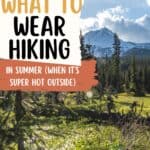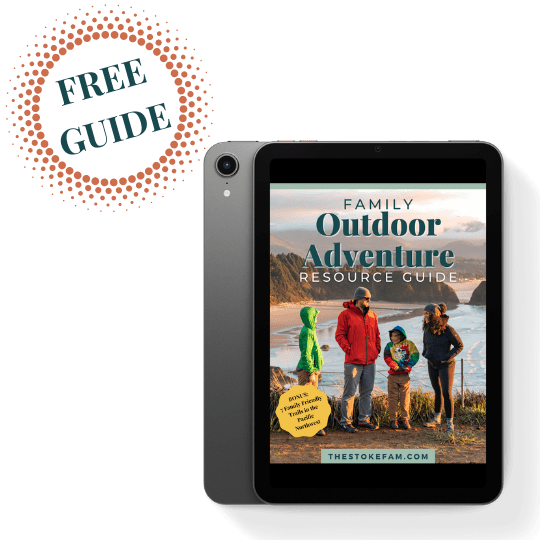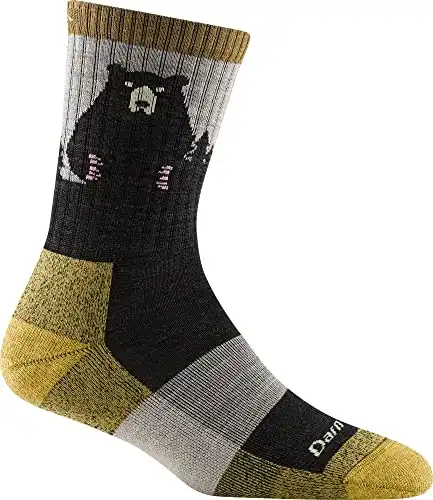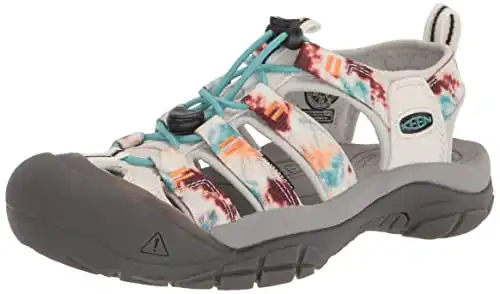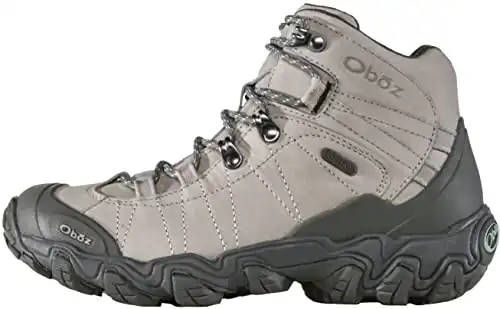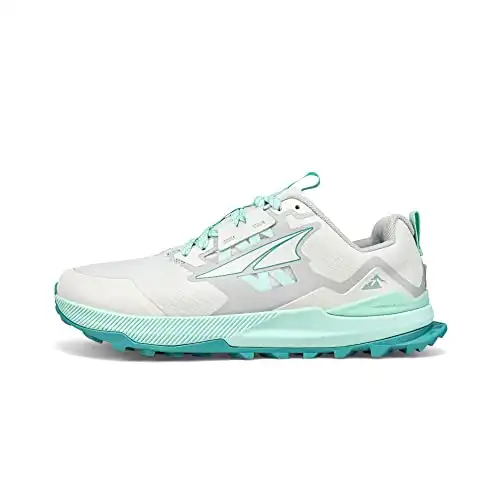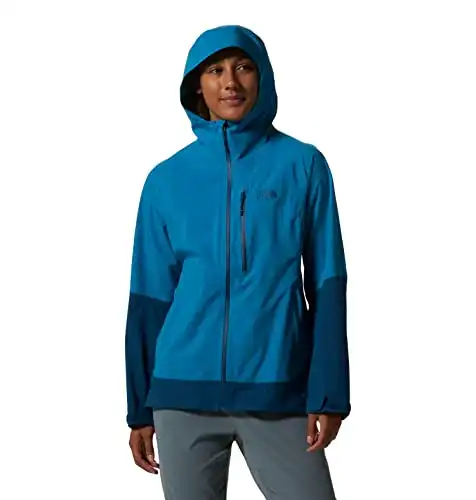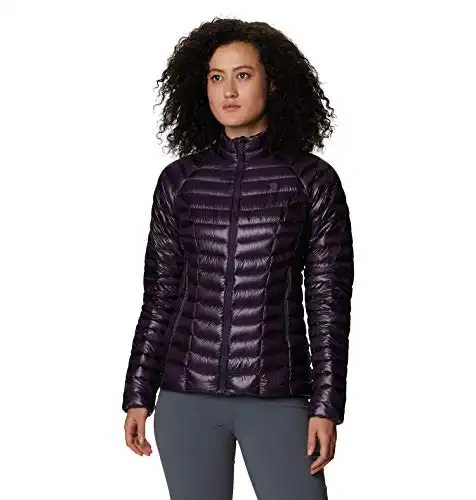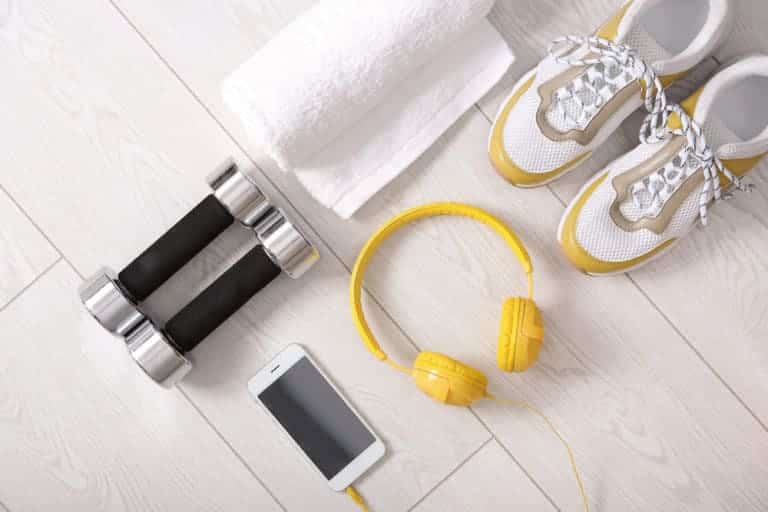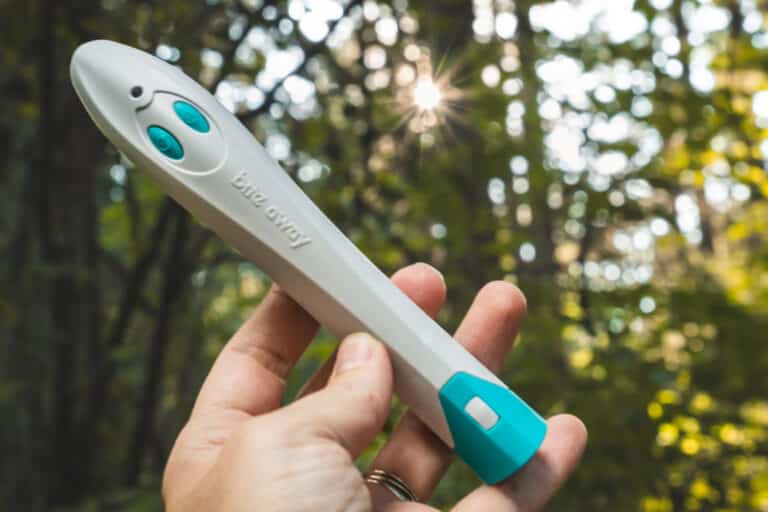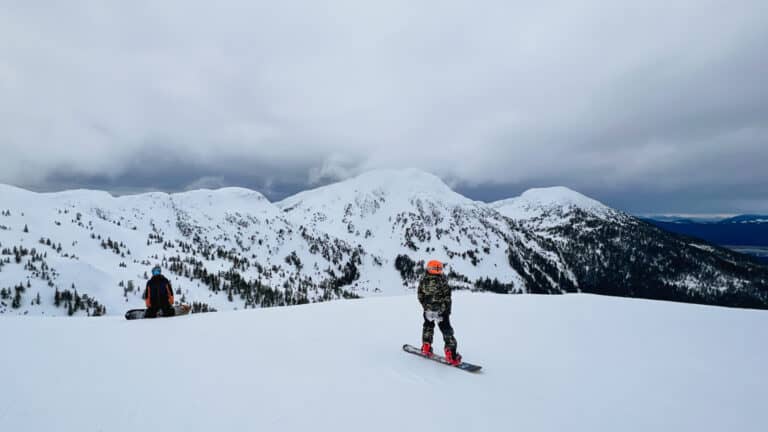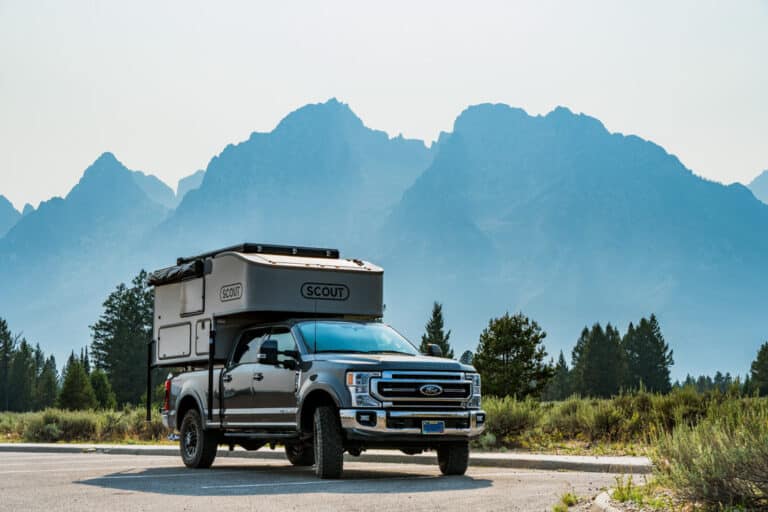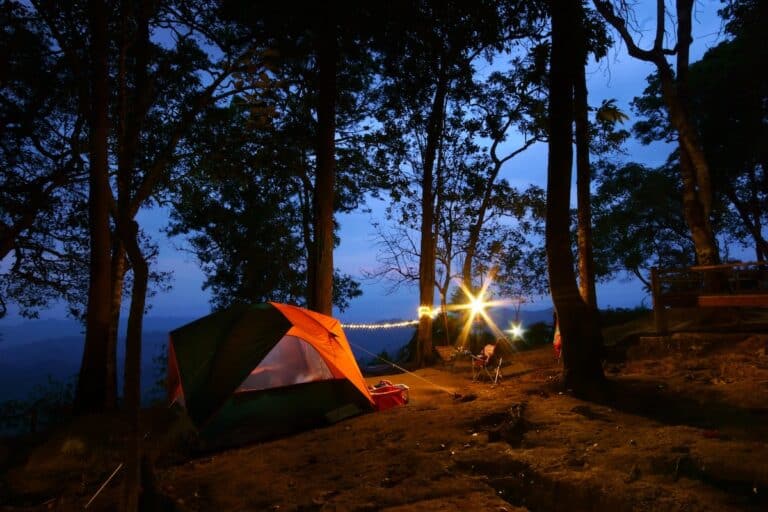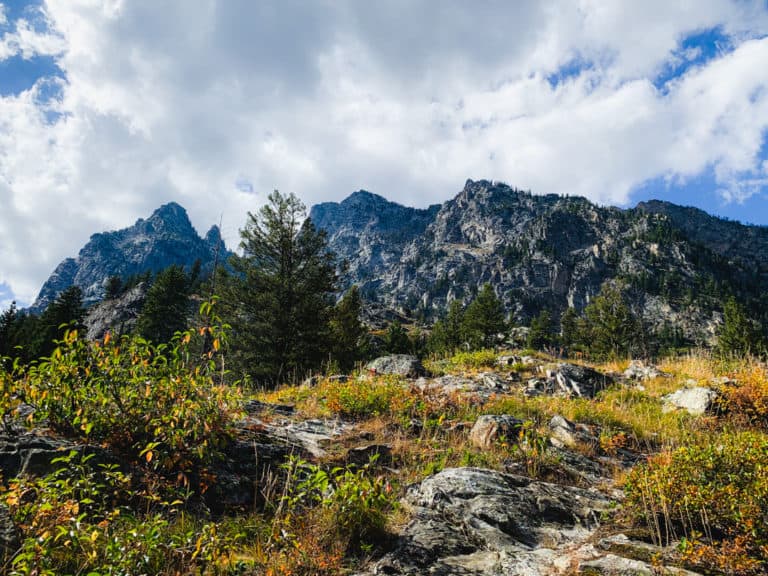Wondering what to wear hiking in summer? You’re not the only one, my friend!
There’s nothing quite like hiking in the summer. The sun’s shining, birds are singing, and you’re ready for an adventure!
But it can also be super hot, depending on where you are.
So, what should you wear to stay cool, comfortable, and safe on the trail? The quick answer is lightweight, breathable fabrics that move with you and wick moisture away from your skin.
But there is a bit more to it than that.
When it comes to summer hiking, it’s essential to dress appropriately to ensure a comfortable and safe outdoor adventure. Wearing the proper layers, fabrics, and accessories can make a huge difference in your hiking experience.
So, in the next few minutes, I’ll share my top tips and things to remember when choosing what to wear on your next summer hike. Whether you’re a seasoned hiker or just starting out, we’ll cover helpful tips on how to dress for the trail so you’ll be ready to tackle any weather with confidence and ease.
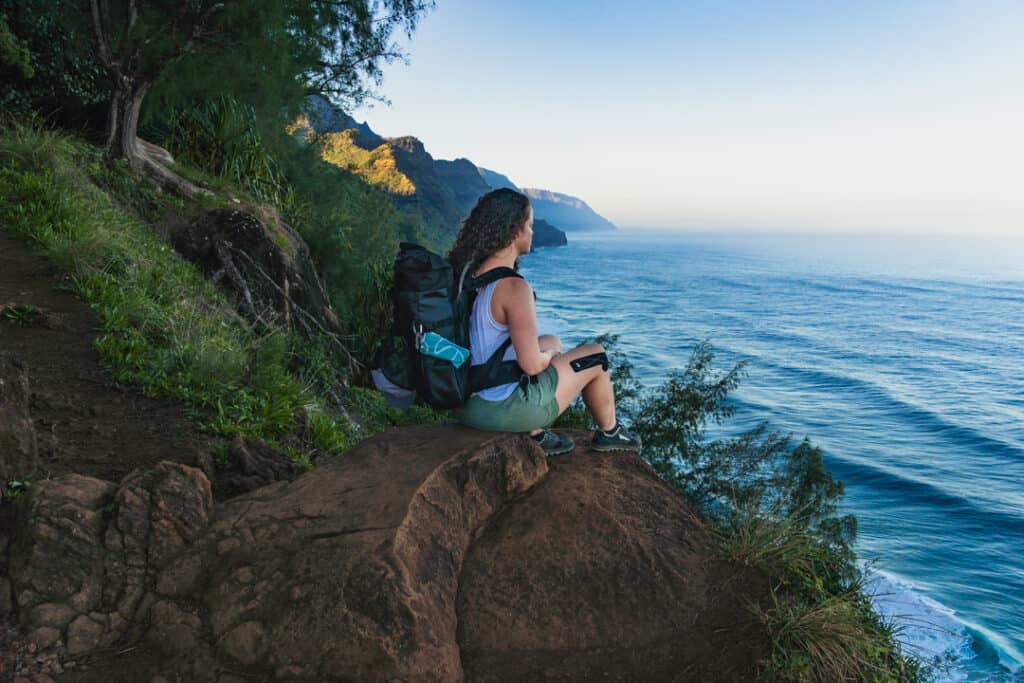
5 Summer Clothing Hiking Tips
Summer hiking is one of my absolute favorites. I’m a warm-weather girl at heart, but it’s not always fun and games when the temperature is rising, and you can’t seem to stay cool.
When adventuring in the heat, choosing what to wear isn’t just about what looks good. It’s about choosing the right pieces for your summer hiking wardrobe to keep you comfortable, safe, and minimize risk on the trail.
Wear Breathable, Wicking Fabric
Just like when you’re choosing what to wear hiking in winter, summer hikes call for breathable fabrics that wick moisture away from your skin.
During winter, the danger of moisture trapped close to your skin is that it can cause hypothermia. Most of the time, in summer, this isn’t likely to happen unless you’re hiking in extreme conditions or at high elevation.
However, there are still reasons you want to avoid trapping moisture next to your skin.
- Fabrics that don’t dry quickly and wick moisture away from your skin (such as cotton) can cause uncomfortable friction, chafing, and even blisters.
- Additionally, if you are hiking at elevation or end up on the trail overnight, temperatures can drop, making hypothermia a risk even in summer.
That said, wearing cotton during summer is less of an issue in the summer than in winter. In fact, if you’re hiking where it’s hot and dry, the moisture can actually help you stay cool as it evaporates.
Just keep in mind that the moisture against your skin might be uncomfortable or cause friction.
If you’re hiking for longer distances, at elevation, have river crossings, or have the potential to hike at night when the temp drops, it’s usually better to be safe than sorry and opt for other materials – or take a change of clothes.

Choosing breathable material that wicks moisture away from your skin, such as synthetic blends or lightweight merino wool (yes, even in summer!), helps avoid these uncomfortable – and potentially dangerous – situations.
Opt for Loose, Comfortable Pieces
Loose clothing items help your body regulate temperature more efficiently. In addition, they allow for increased airflow, which will also aid in keeping you cool.
Choose Light Colors
Clothing made from light colors reflects light, which will help keep you cool, whereas dark colors absorb light and can make you hotter.
Some excellent options to look for are tan, khaki, light green, or grey. White is another great option, but not my favorite for hiking, as it will look dirty much faster.
Prioritize Sun Protection
Sun protection is a priority all year, but especially during the summer months. Though every clothing item blocks some of the sun’s rays, it’s not a guarantee.
When possible, opt for clothing that is UPF-rated.
We often wear UPF long sleeve shirts made of a synthetic, wicking fabric to shield our arms and shoulders from the sun. Choosing UPF-rated pieces ensures that you’re protecting your skin to the rating on the clothing item, with options all the way up to a UPF rating of 50+.
In addition, be sure to bring sunglasses and a sun hat to protect your eyes and face from the sun’s glare. And last but not least, use sunscreen on any exposed skin.
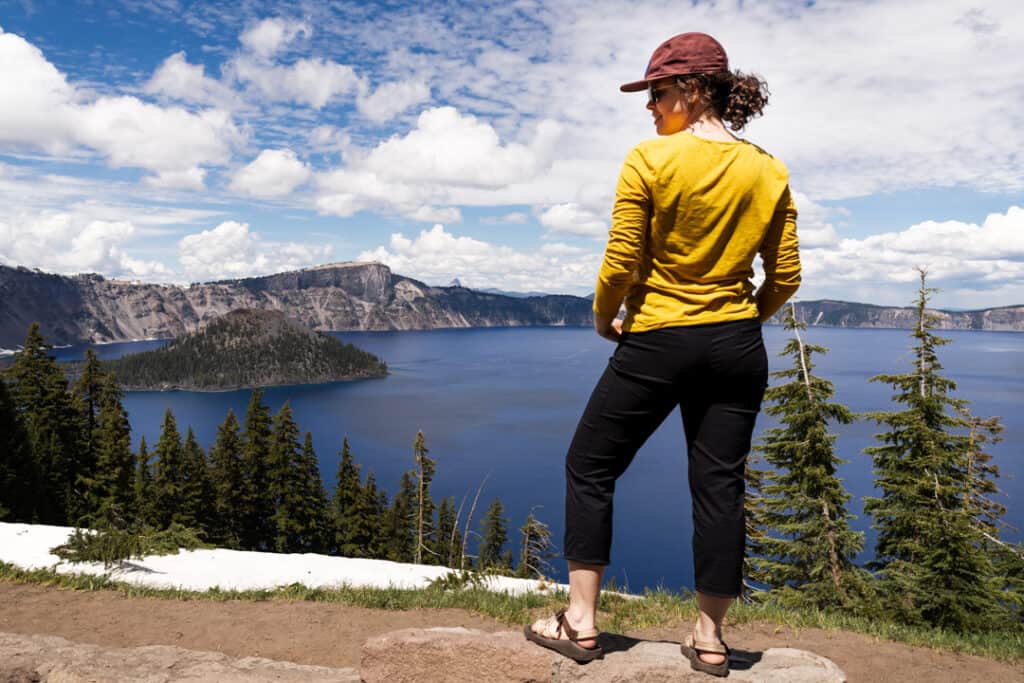
Don’t Forget Your Feet
Having the right footwear on a hike can make or break your day. There’s nothing worse than ill-fitting, uncomfortable, or blister-causing shoes or socks during a hike.
Choosing what type of hiking shoes to wear comes down to a few factors, including terrain, weather conditions, and personal preference.
For instance, if you’re hiking a short trail with many river crossings on a hot summer day, you may opt for a pair of KEEN sandals like these. They are made for outdoor adventures like hiking, and you can wear them straight through river crossings. However, there may be better choices (like these hiking boots) if you prefer a fully enclosed shoe.
If you’re on a long hike with lots of rocky terrain, a hiking boot with plenty of support may be the best option. Alternatively, a trail runner could be your perfect fit if you prefer a lightweight, agile shoe.
And if you’re hiking with littles, finding the best hiking shoes for kids is also so important! I will always invest in a good pair of hiking shoes or boots for our kids because I want them to be comfortable and happy on the trail!
Either way, it’s crucial to choose hiking shoes that fit correctly and pair them with synthetic or wool socks (not cotton) that are breathable and wicking. My favorites are these wool socks – yes, even in summer!
What Layers to Wear When Hiking in Summer
Summer hikes bring a unique set of challenges when it comes to clothing. Depending on where you’re hiking, there can still be temperature fluctuations and weather patterns that leave you feeling overheated one minute and chilly the next.
For example, when hiking here in Portland (and the rest of the Pacific Northwest), even in the summer, I often find myself reaching for a jacket. Especially if we’re hiking in the early morning or late evening. Daytime temps can easily be 80°F, but they regularly drop into the 50-60°F range at night.
Because of this, we always bring extra layers – even during the hot summer months.
Years ago, we made a mistake that isn’t uncommon for hiking beginners and found ourselves in a situation where we got lost and ended up on the trail hours later than intended. Luckily, we found our way out and didn’t have to spend the night, but it could have quickly gone the other way.
While emergencies are rare, you never know what can happen on the trail, and being prepared if you need to stay overnight is critical.
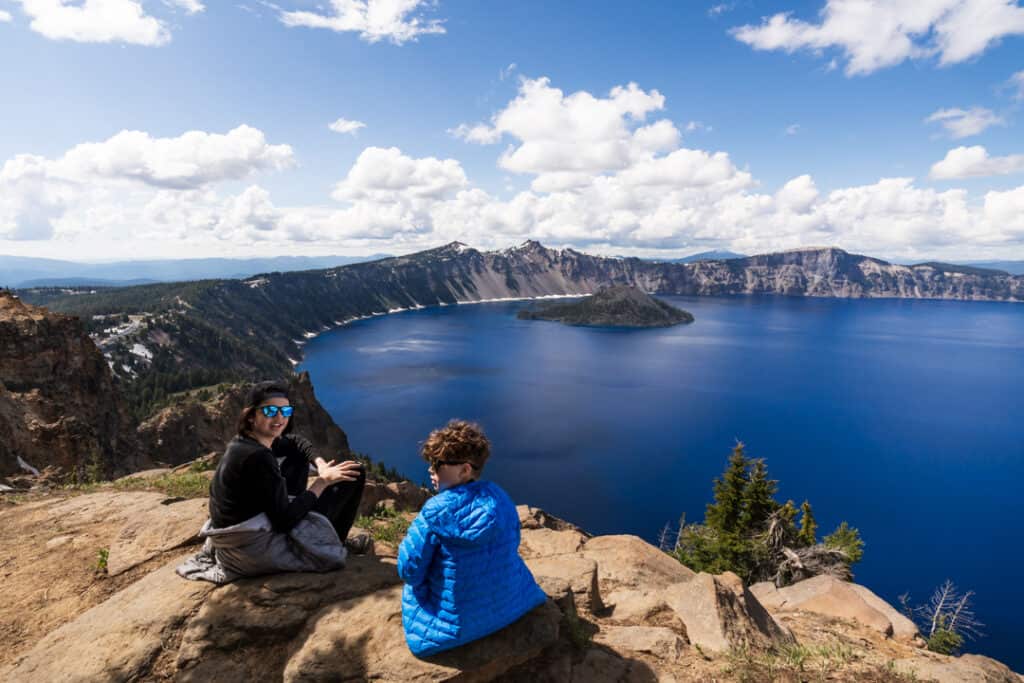
That’s why bringing options to layer your clothing effectively is vital. Here’s what you should keep in mind:
- Choose a moisture-wicking base layer made of breathable fabrics like polyester or wool. This will keep you cool and dry by pulling sweat away from your skin.
- Avoid cotton clothing, which retains moisture and can lead to chafing and discomfort.
- Bring layers that you can use to cater to the weather:
- A lightweight rain jacket or windbreaker provides protection against unpredictable summer showers and wind gusts.
- A lightweight puffy jacket keeps you warm without weighing you down if temperatures drop.
- Always check the weather forecast before hitting the trail. Though it can obviously change, knowing what to expect will help you be prepared and safe.
Best Shirts to Wear Hiking in Summer
When it’s time to hit the trail on a summer day, it’s important to choose a shirt that is comfortable and helps you regulate your temperature. (It doesn’t hurt if it looks good, either. 😉)
Here are some tips to help you pick out the perfect hiking shirt:
- Look for shirts made of breathable and moisture-wicking fabric like polyester or merino wool. This will keep you cool and dry even in the hottest summer temperatures.
- Consider a shirt with UPF (ultraviolet protection factor) rating for extra sun protection, especially if you plan to hike in areas with lots of sun exposure,
- For extra arm protection, consider a lightweight long-sleeved shirt. It may sound odd when it’s hot outside, but it can actually keep you cooler by protecting your skin from direct sunlight and helps protect you from the sun’s UV rays.
- When the heat is just too much, and you feel hotter than a jalapeño in a sauna, it’s 100% OK to rock a tank top or sleeveless shirt. Just make sure to wear sunscreen and hydrate frequently. Note: Keep in mind that when you wear a tank top, your backpack straps may rub uncomfortably on your shoulders or under your arms. I tend to bring a backup short sleeve or long sleeve shirt if I opt for a tank top, just in case this becomes an issue.
- Last, remember that when choosing a hiking shirt for summer, light-colored shirts help keep you cool by reflecting sunlight and absorbing less heat.
By following these tips, you’ll be able to find a shirt that ticks all the boxes to keep you comfortable, breathable, and sun-safe during your summer hike.
Summer Hiking Shirts
Here are a few of our favorite shirts for hiking in the summer:
- This UPF 50+ rated long-sleeve from Mountain Hardwear
- Another UPF 50+ rated long-sleeve from Patagonia. My husband owns this style and wears it All. The. Time. It comes in womens, kids, and even toddler sizes (with the cutest prints) too!
- Title Nine Ravine Muscle Tank and Notton Racer Back Tank – These two *almost* feel like cotton, but are made of special wicking poly blends that also resists odors.
- This super lightweight cropped tank from lululemon is one of my new favorites. (I wore it hiking in Kauai!) While technically a running shirt, it’s lightweight, flowy, and comfortable in the heat.
- For a short-sleeve option to prevent friction from backpack straps, this Mountain Hardwear option is great! It has a UPF 30 rating, is breathable, and comes in a variety of colors to fit your style.
Best Pants or Shorts to Wear Hiking in Summer
Choosing the best summer hiking pants or shorts is just as important as picking the right shirt when dressing for a summer hike.
Here are some things to consider:
- Opt for long pants or shorts that are lightweight, breathable, and quick-drying. This will keep you cool and comfortable in hot and humid conditions.
- Choose pants or shorts with a good range of motion, allowing you to move freely on the trail. Consider stretchy materials or pants with a gusseted crotch for added mobility.
- If you’re hiking in areas with lots of brush or rocky terrain, pants can provide added protection against scratches or scrapes.
- When choosing shorts, I like to give them the “ride up challenge” before taking them on a hike. I walk around, climb the stairs, squat, and generally look ridiculous at home (or in the dressing room 😅🤷♀️) to ensure they stay put. If they ride up, give you a wedgie, or aren’t comfortable doing any of those movements, they aren’t going to be comfortable on the trail.
- Last, if you’re wearing shorts and your thighs touch (even a bit) like mine, you’ll want to err on the longer side or use an anti-chafe balm.
Ultimately, the type of hot weather hiking pants or shorts you wear will depend on your personal preferences and the conditions of your hike. You’ll be on the right track as long as you choose clothing that is lightweight, breathable, and allows for good mobility.
Summer Hiking Pants and Shorts
Some of my favorite hiking pants and shorts for our family are:
- Women:
- If you’re someone who loves to live in leggings (👋 it’s me – I’m someone), these hiking shorts from lululemon should be on your radar! The high rise and longer length is great, but my favorite feature is the abrasion resistant fabric that’s designed to wick sweat. 🙌
- These shorts from Vuori are super lightweight, comfortable and cute and I like the slightly longer inseam to prevent thigh rub.
- These Prana hiking pants are always in my rotation. They are durable, have a bit of stretch, and look cute!
- Last, from Title Nine, I love the Switchback Hiking Shorts, Recycled Clamber 2.0 Capris, and Big B Pants.
- Men:
- My hubs wears these Prana pants everywhere. Literally. He takes them hiking, camping, to town, and even around the house. They’re breathable, move with him, and must be comforable becuase he keeps buying more, lol!
- If it’s too hot for pants, he reaches for the same style from Prana in a pair of shorts. They come in an 8″ inseam, 10″ inseam, or a 12″ inseam and have the same comfy fit. My teen wears these too!
- Kids:
- For younger kids, these shorts from Columbia or these from Patagonia are comfortable, breathable, and dry quickly – perfect for summer!
Best Outer Layers for Summer Hiking
While the summer sun may be scorching, that doesn’t mean you can skip outer layers on your hike. They may seem unnecessary in the summer heat, but mid and outer layers can provide crucial protection and comfort when unexpected weather changes or temperature drops occur.
Here are a few reasons why outer layers are essential, even during summer hikes:
- Protect from rain: Summer rainstorms can sneak up on you, leaving you drenched and shivering. A rain jacket or pair of water-resistant pants can keep you dry and comfortable during these unexpected downpours.
- Protection from the sun: While you may think about sunscreen to protect your skin, outer layers can also provide an essential shield against the sun’s harmful rays. Lightweight and breathable sun-protective clothing can be a good option for prolonged sun exposure.
- Shield from wind: Wind can be particularly chilly on exposed mountaintops or ridges, so having a windbreaker or shell to block the wind and keep you warm is essential. (Your rain jacket can often pull double duty as a windbreaker.)
- Insulation: Summer nights can get surprisingly chilly, so if there’s any chance you’ll be out after dark, an insulated layer is a good idea. Lightweight and packable jackets, like a puffy jacket, can provide extra insulation to keep you warm.
When choosing outer layers for summer hiking, go for lightweight and packable options that won’t weigh you down on your hike. A good rain jacket or windbreaker should be breathable and water-resistant, while a lightweight puffy jacket should be compressible and warm.
By bringing appropriate outer layers, you will be prepared for whatever mother nature throws at you during your summer hike, staying comfortable and protected, so you can focus on enjoying your outdoor adventure.
Outer Layers for Summer Hikes
These are some of my favorite outer layers for hiking in summer (or really anytime of year):
I have this Mountain Hardwear jacket as part of my layering system. I love that it's lightweight and packable - it fits in its own pocket! It's also made of stretch ripstop, so it's durable while still moving with you. 🙌
I love this down jacket from Mountain Hardwear. I've had it for several years and it's still my go-to choice for travel and layering. It packs down easily into one of its pockets, is lightweight to carry, and provides ample warmth.
Best Socks and Footwear for Summer Hikes
When you’re out on a summer hike, you’ll likely be on your feet for hours, so wearing the right footwear and socks is essential. Here’s what you need to know:
- Choose comfortable, well-fitting, breathable hiking shoes or boots appropriate for your chosen terrain. Trail runners or lightweight hiking shoes can be a good choice for less rugged terrain, while sturdier hiking boots are necessary for more challenging hikes.
- Make sure to break in your shoes or boots before hitting the trail to avoid blisters.
- Wear socks made of moisture-wicking materials (wool or synthetic) to keep your feet dry and reduce the risk of blisters. Avoid cotton socks because they absorb moisture and can cause friction against your skin.
- Bring an extra pair of dry socks in case your first pair gets wet or excessively sweaty on the hike.
- In addition, if you’re prone to blisters, bring a blister kit or moleskin and take care of hot spots right away.
Remember, keeping your feet comfy is everything on a hike, so it’s worth investing in good shoes or boots that provide comfort, support, and protection against rugged terrain.
Here are some of my top footwear picks for summer hikes:
The sole on the Altra Lone Peak is one of my favorites of any hiking shoe. It's grippy without being stiff and holds up well in dry or wet weather.
These closed-toe water sandals are great for short hikes in the summer - especially those with water crossings!
These hiking shoes from Oboz are some of my favorites! They have excellent arch support, sturdy lugs on the sole for a variety of terrain, and were comfortable right off the bat.
I love that Darn Tough socks come in a wide variety of styles and weights for adventuring in different conditions. These lightweight crew socks are my go-to choice with my Oboz hiking boots for most hikes in fall, winter, and spring.
Best Underwear & Bras for Summer Hiking
What you wear under your clothing is another important part of your summer hiking attire. Again, I recommend wool or synthetic fabrics that wick moisture (are you catching the theme yet?! 🙃)
When it comes to bras, there’s no way you’re gonna find me wearing underwire on the trail. Instead, I like to wear a comfortable light to medium-impact sports bra or bralette.
My absolute favorite at the moment is this lightweight wool bralette from REI. It’s breathable, comfortable, and dries quickly. Plus, since it’s wool, it resists stink. 🙌
In terms of underwear, both my husband and I have converted to lightweight wool for our outdoor adventures. Just be mindful to wash them on gentle (or handwash) and hang them to dry to increase their lifespan. Underwear made from synthetic fabrics are great as well, but they do tend to stink more quickly.
Best Hiking Underwear
Here are some of our favorite merino picks:
Best Summer Hiking Accessories & Essentials
Your summer hiking kit should include the 10 Essentials along with accessories to keep you safe and comfortable during your hike.
It’s also important to remember that staying hydrated is crucial for your health and safety during summer hikes. Make sure to bring enough water (and hydration supplements like electrolyte tablets when needed) to replenish fluids lost through sweating.
Summer Hiking Essentials & Accessories
Here are some of the additional items we like to include on our summer hikes:
- Sunglasses to protect your eyes from sun glare and harmful UV rays
- A hat to protect your face, ears, and neck from the sun
- A neck gaiter can also protect your neck on sunny days
- Sunscreen with a high SPF to prevent sunburn and skin damage
- Insect repellent to keep annoying bugs at bay (I’m looking at you, mosquitos!)
- Trekking poles for added stability and to reduce the impact on your joints
- A day pack (these are great options that are compatible with water reservoirs) to carry your essentials, including water, snacks, and extra clothing layers.
- A hydration system (like a water bottle or hydration pack) to keep you hydrated during your hike.
- A water filtration system, personal filter straw, or purification tablets to make sure your water source is safe to drink
- Snacks and energy bars to fuel your body and keep you going
- A compass, map (we like to download or print from Gaia GPS or AllTrails), or GPS device to help navigate your way through unfamiliar territory.
By bringing these accessories and staying hydrated, you’ll be well-equipped to enjoy your summer hike, safe and comfortable, and ready for whatever nature has in store for you.
FAQs About Summer Hiking Clothes
Should I wear shorts when hiking in the summer?
Shorts can be excellent for summer hiking, especially in hot and humid climates. However, you won’t have as much protection from scratches, scrapes, etc., as with a light-colored pair of pants.
If you opt for shorts, look for options made of lightweight and breathable materials that provide moisture-wicking capabilities.
Is it safe to hike in 90-degree weather?
It can be safe to hike in 90-degree weather, but taking precautions to prevent heat exhaustion or heat stroke is essential.
Choose lightweight and breathable clothing, bring plenty of water, take breaks in the shade, and try to hike during cooler parts of the day, like early morning or late afternoon. It’s important to follow additional safety tips when adventuring in the heat and to know the signs of heat exhaustion and heat stroke.
Should I wear jeans when hiking in summer?
It’s better to avoid jeans when hiking in summer because they are heavy and not as breathable as other fabrics.
Plus, if they get wet – from sweat or river crossings – they can stay damp for hours, making them even heavier and increasing the potential for chafing.
Instead, choose lightweight and stretchy pants or shorts that allow freedom of movement and provide protection against scratches and scrapes.
Can I wear leggings when hiking?
Yes, if your favorite pair of leggings are made from moisture-wicking and breathable materials, you can definitely rock them on a hike. But because tight-fitting clothing can make it harder to regulate your body temperature, I suggest opting for them when the temperatures are milder. (Or wear shorts like in the image below!)
In addition, I recommend that you look for leggings made of more durable fabrics that won’t rip or tear if they get caught on a stick or pick when you sit down on a rock or log for a break.
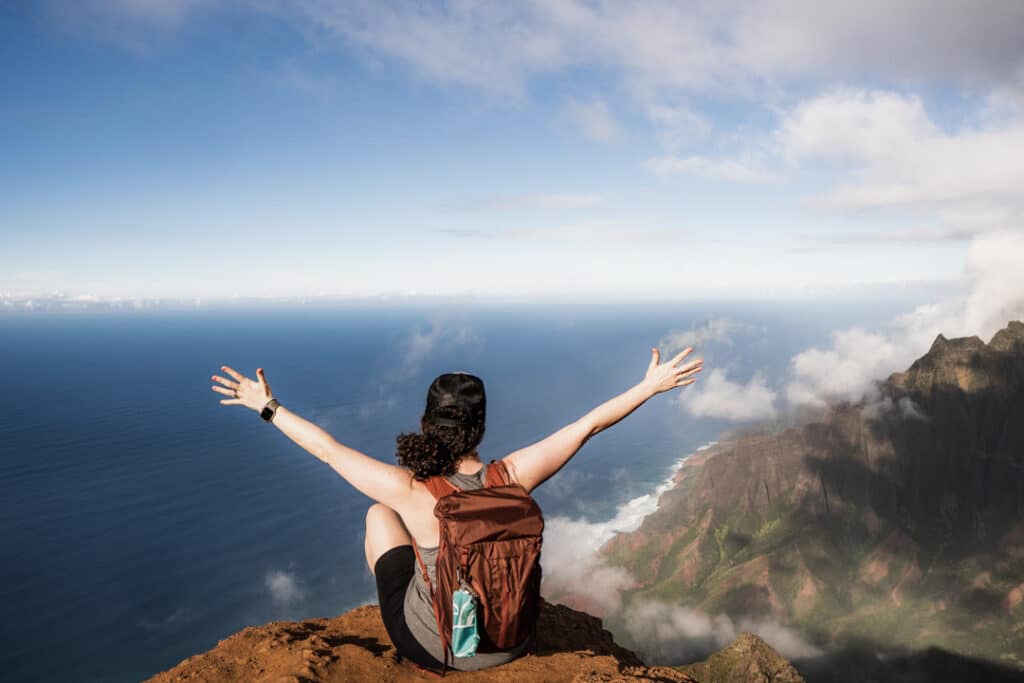
Final Thoughts on What to Wear Hiking in Hot Weather
I hope these tips have inspired you to get out and explore the summer hiking trails! With the right clothing and accessories, you can stay safe and comfortable while enjoying the natural beauty around you.
By following these simple guidelines, you’ll be well-equipped to enjoy all that summer hiking offers. So, gear up, step out, and have a great time exploring the great outdoors!
Related Hiking Articles
If you found this post helpful and are looking to learn more about hiking and hiking gear, you’ll want to check these out next:

